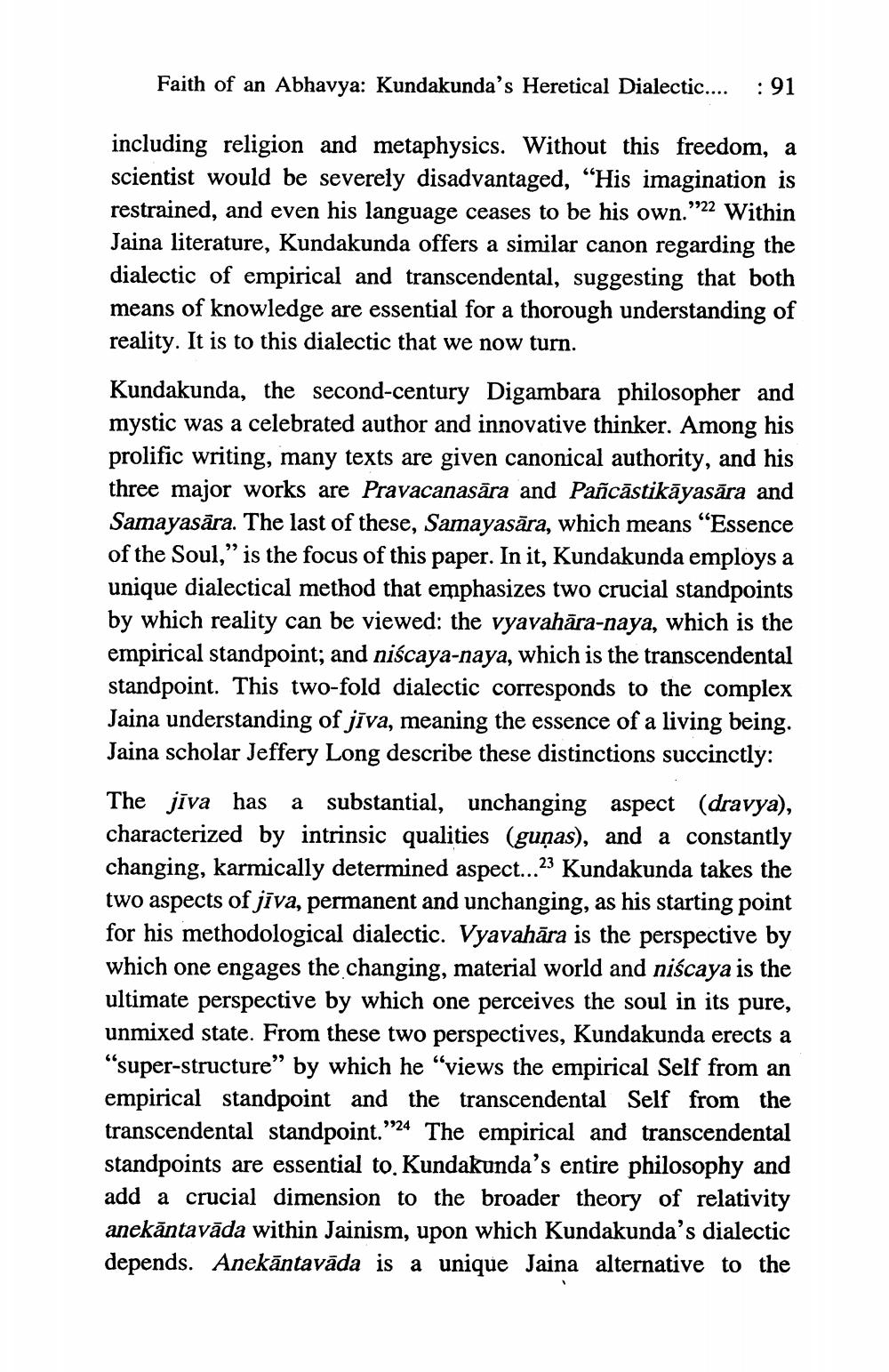________________
Faith of an Abhavya: Kundakunda's Heretical Dialectic.... : 91
including religion and metaphysics. Without this freedom, a scientist would be severely disadvantaged, “His imagination is restrained, and even his language ceases to be his own."22 Within Jaina literature, Kundakunda offers a similar canon regarding the dialectic of empirical and transcendental, suggesting that both means of knowledge are essential for a thorough understanding of reality. It is to this dialectic that we now turn. Kundakunda, the second-century Digambara philosopher and mystic was a celebrated author and innovative thinker. Among his prolific writing, many texts are given canonical authority, and his three major works are Pravacanasāra and Pañcāstikāyasăra and Samayasāra. The last of these, Samayasāra, which means “Essence of the Soul,” is the focus of this paper. In it, Kundakunda employs a unique dialectical method that emphasizes two crucial standpoints by which reality can be viewed: the vyavahāra-naya, which is the empirical standpoint; and niscaya-naya, which is the transcendental standpoint. This two-fold dialectic corresponds to the complex Jaina understanding of jīva, meaning the essence of a living being. Jaina scholar Jeffery Long describe these distinctions succinctly: The jiva has a substantial, unchanging aspect (dravya), characterized by intrinsic qualities (guņas), and a constantly changing, karmically determined aspect...23 Kundakunda takes the two aspects of jīva, permanent and unchanging, as his starting point for his methodological dialectic. Vyavahāra is the perspective by which one engages the changing, material world and niscaya is the ultimate perspective by which one perceives the soul in its pure, unmixed state. From these two perspectives, Kundakunda erects a “super-structure” by which he "views the empirical Self from an empirical standpoint and the transcendental Self from the transcendental standpoint.'24 The empirical and transcendental standpoints are essential to Kundakunda's entire philosophy and add a crucial dimension to the broader theory of relativity anekāntavāda within Jainism, upon which Kundakunda's dialectic depends. Anekāntavāda is a unique Jaina alternative to the




